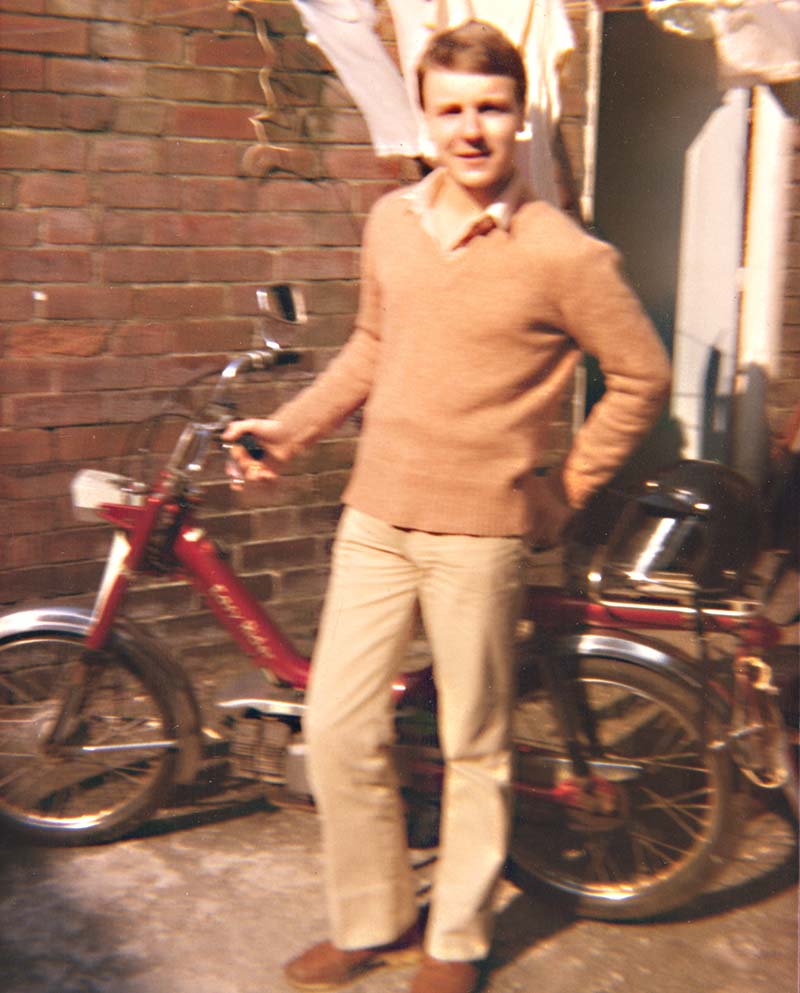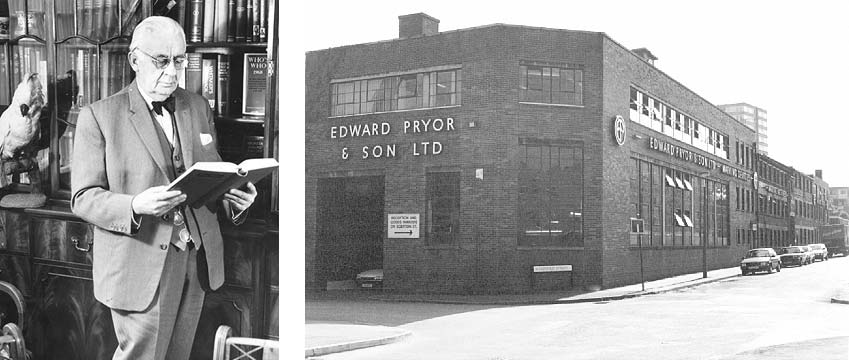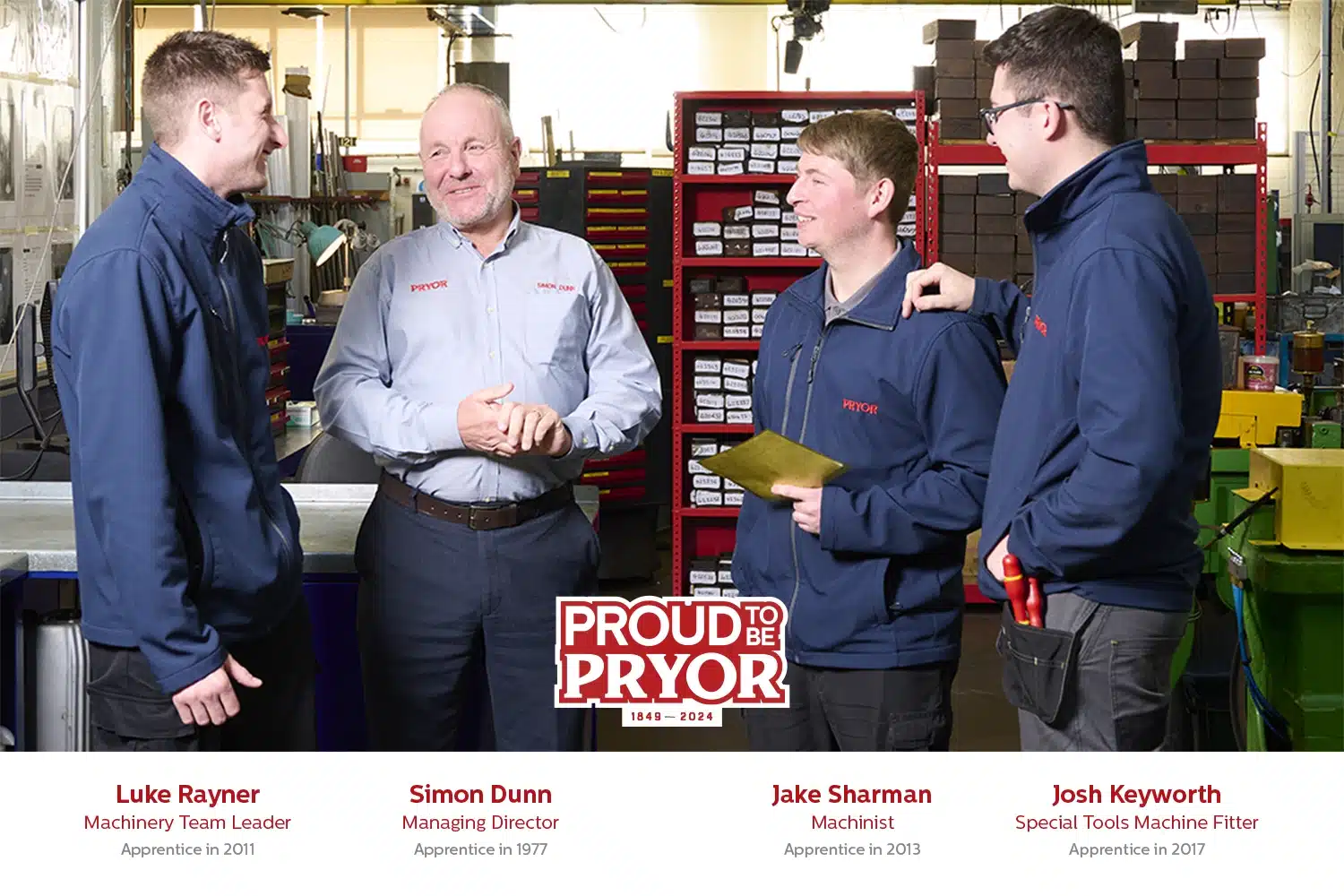Pryor and the Apprentice
From completing his apprenticeship (1843 to 1848) to becoming owner of the business less than a year later, Edward Pryor made his name through the quality of the marks he made – but his real legacy was the generations of apprentices that found their first jobs with Pryor.
During the first century of Edward Pryor and Son, new blood drove the expansion of the firm, until WWII and compulsory National Service caused a “drying up” of apprenticeships in the1940s and 50s.
The need for industrial training returned in the 1960s, with a huge national need for skilled workers and Pryor were again the keenest of training providers. It is hard for some to see the historical context – how long the story is – but when Edward was an apprentice Charles Dickens was a trending celebrity. 128 years later, when it was a young Simon Dunn’s turn to be apprenticed, the Sex Pistols were in the singles chart!

Simon’s burning ambition to be a Fitter came from a preference for variety of work and the ideas emerging from “The White Heat of Technology, but his apprenticeship, supplemented by 12 years of simultaneous and continuing college courses covered every department from Machine Shop to Heat Treatment.
This training strategy meant he could be placed in any department where skilled hands were needed; even though his personal passion was very specific. Completing his apprenticeship was to become a milestone in Simon’s life. He still feels he would have left the company had he not become part of the Fitting team.
Everything, as he now concedes, happens for a reason.
Then as now, mentors at Pryor inspired apprentices and encouraged Simon to be self-sufficient, with a solid work ethic. There were no excuses for turning in late or not finishing up before he left. Colleagues willing to help him along the way, such as Ted Howard the General Manager, led by example and are still remembered fondly as great characters.
While the firm granted his wish to join the Fitters, the comprehensive training the company had put him through was the basis for whole company / industry knowledge, that was to see him progress to management in a way he could not have imagined in the 70’s.
After his apprenticeship Simon became a special machine tool fitter and then a service engineer- he began building machines, so it only made sense that he should go out and service them, often in other countries.
With an eye to the future Ronnie had already created a Charitable Trust, launched in 1978, to protect the company and the way it worked long after his retirement. The Trust remains the majority owner of the company today, ensuring the wishes and traditions established by the Pryor family remain the backbone of the company.
Beyond the Trust and despite being the last of the Pryor Family to lead the company, he still had big plans for the future, and while he kept his cards close to his chest, the vision was pushed forward by bringing in consultants; briefed to modernise and move the company from the traditional pyramid management model to a more linear structure, where existing superior roles were either abolished or had to be reapplied for.
Simon was one of the Pryor team that saw huge benefits in a management restructure.

Ideas for new methods and machines came thick and fast, the first computer controlled DotPeen Markers evolved from scavenging parts from home computers, laser marking machines by Pryors became another industry first, integrated controllers and portable markers drove sales further. Outsourcing some manufacturing abroad was tried, because all UK manufacturers had seen the potential cost savings in the 1980’s but was brought back home in 2017 to ensure quality and continuity.
from Apprentice to Managing Director
Simon Dunn, from Apprentice to Managing Director in 2022, has seen it all and the changes have been almost miraculous – using online sales and communications alongside high tech marking solutions have seen phenomenal changes in efficiency, proficiency and delivery times that have gone from 6 – 7 weeks to next day on a huge range of products especially traditional steel hand stamps – while the Solutions part of the business is working with every major name in Auto and Aerospace industries – integrating marking systems into the production lines of most of the global brands.
The flat line of the management across all departments has built what Simon sees as the best team from the best people in the industry – with two or three already amiably admitting they want Simon’s job!
But – for all he has seen over the years – all the progress – all the changes – the one thing he still recognises is the importance of Apprentices. Training them, bringing them through and encouraging them to be ambitious, because at Pryor there is no glass ceiling.
Simons’ ambition, before he retires, is to be there at the start of Pryor’s next era – where they move to the next (8th in 175 years) factory – purpose built to the highest specifications, future proofed for further expansion and welcoming each new pair of skilled hands.
All of them as Proud to be Pryor as Simon Dunn the Apprentice was, and Simon Dunn the Managing Director is!
More to read about apprenticeships.
In the 1840’s there was no talk of business “culture” no plans for hiring and training; apprenticeships had been the norm for adding skilled hands where needed for thousands of years – formally named as apprenticeships by European and British Trade Guilds in the 1400’s. The Guilds became so influential in the commercial and political life of England that Elizabeth the First had her Parliament induct the Artificers and Apprenticeship Act of 1562. Not as altruistic or visionary as later legislation, for either employee or employer, but essentially the first national vocational training scheme that codified apprenticeships while taking away much of the power held by the Guilds. No better educational format has ever been found for vocational training.
